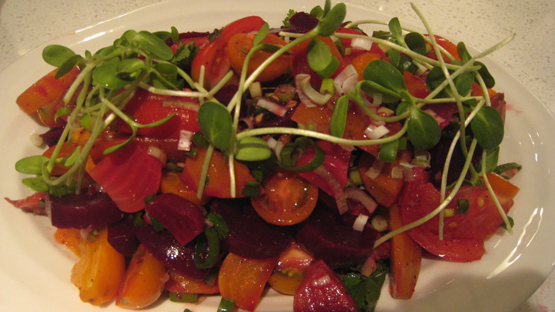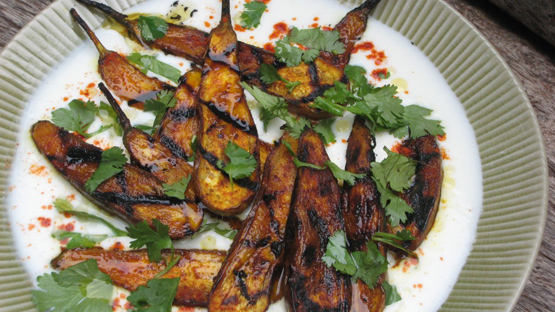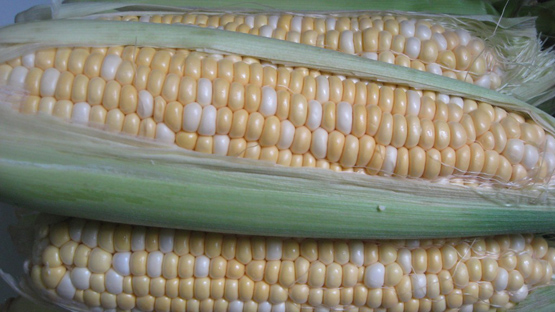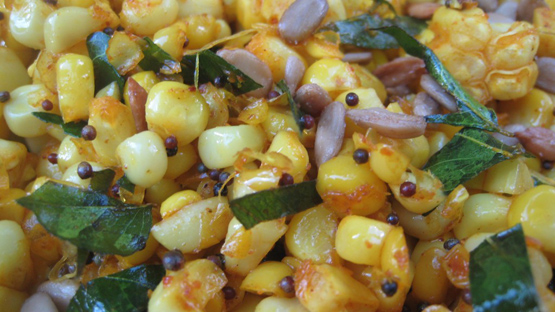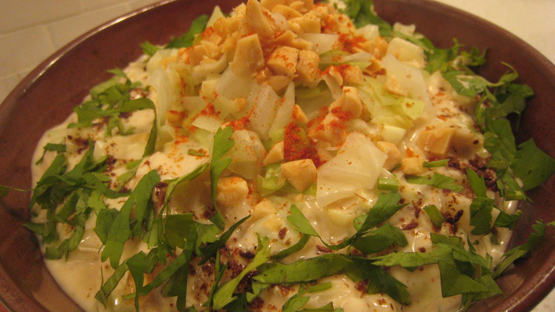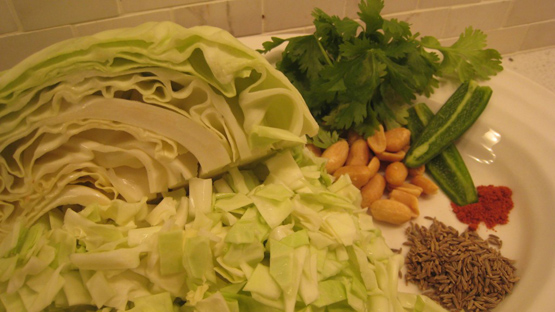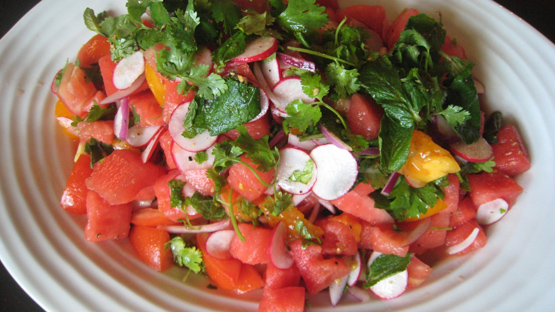This week throughout the world various religious celebrations have brought family and friends together: Muslims celebrating Eid and Hindus worshipping the elephant God Lord Ganesh with the festival Ganesha Chaturthi. Although I do not practice either religion I still felt it necessary to get some old and new friends together for a celebration.
A slight chill in the air has arrived indicating soon summer will abruptly end. But there is still much work and harvesting to be done in the farmer’s fields. Ripe heirloom tomatoes, multi-coloured beets, fragrant golden apricots and an organic chicken shaped the menu with my friends: a beet, tomato, cumin salad; fenugreek chicken curry; and poached apricots scented with cardamom and saffron.
- 1 lb. beets (small or medium sized are preferred)
- 1 lb. tomatoes
- ½ tsp cumin seeds, toasted and ground
- 3 spring onions, finely chopped
- ½ cup fenugreek sprouts or micro green sprouts such as radish or sunflower
- ¼ cup coriander, roughly chopped
- Juice of 1 lemon
- Salt and pepper, to taste

- 1 kg boneless chicken thighs (breast can also be used)
- 1 ½ cups diced onion
- 3 tbsp ginger, finely chopped
- 3 tbsp garlic, finely chopped
- 8 green cayenne chillies, slit lengthwise
- 1 box (25 grams) dried fenugreek (kasoori methi)
- 6 tbsp vegetable oil
- 1 cinnamon stick
- 5 whole cloves
- 5 green cardamoms
- 1 bay leaf
- ½ to 1 tsp cayenne powder
- 1 tsp coriander powder
- 1 tsp cumin powder
- ½ tsp turmeric powder
- 1 cup diced tomatoes (if using canned, do not add liquid from can)
- 1 cup yogurt
- ½ to 1 cup water
- Salt, to taste (approx. 1 ½ tsp)
- For Garnish:
- A generous pinch of garam masala
- 2 tbsp ginger, julienned
- ¼ cup coriander, roughly chopped
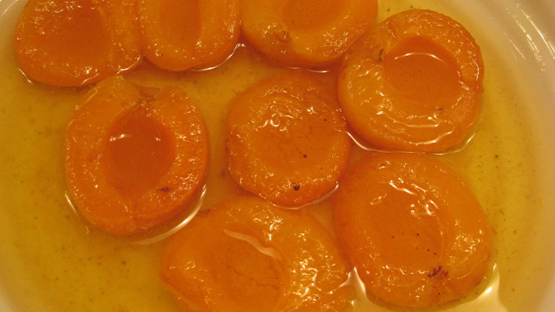
- 1 pound fresh apricots (or 18-21 dried apricots)
- 3 cups water
- ¾ cup sugar
- 10 green cardamom pods
- Pinch of saffron
- 1 tbsp lemon juice (optional)
NOTE: This was originally posted on my blog India On My Plate September 02, 2011

